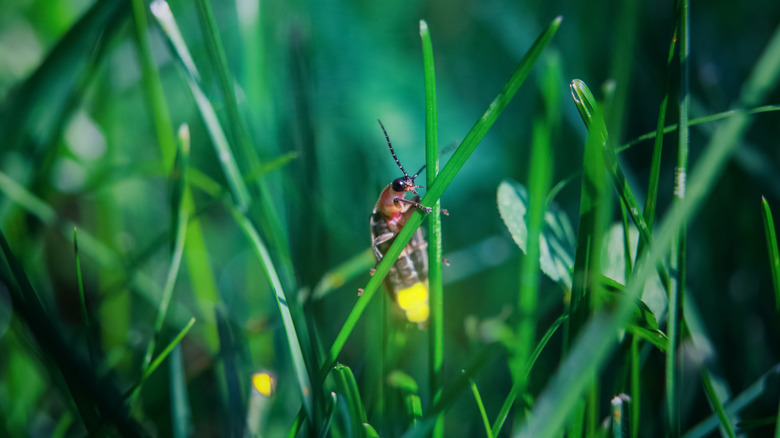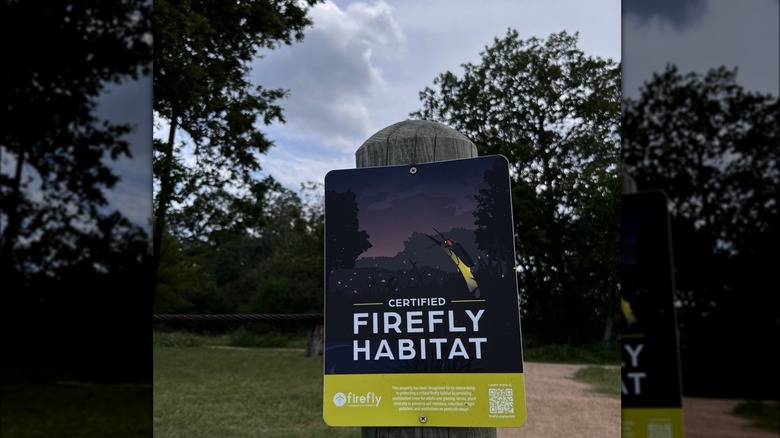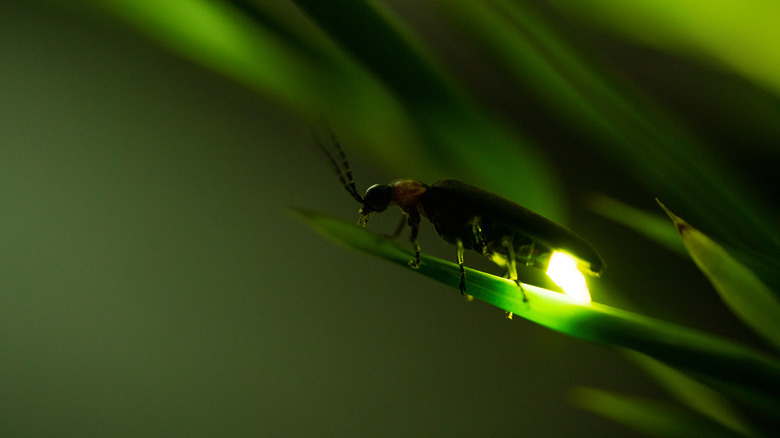Turn Your Backyard Into A Certified Firefly Habitat
As a summer day fades into night and sunlight gives way to moonlight, grasses come alive. Tinkling lights appear in a chorus, flickering in harmony as fireflies (or lightning bugs for us Midwesterners) come back to life for their evening joviality. Yet, their populations have been on a downward turn. So much so, in fact, that research in the Public Library of Science journal PLOS One indicates that 1/3 of firefly species in Canada and North America are at risk of extinction.
Why? Enemy number one for fireflies is habitat loss. That's why you might be seeing less and less fireflies in your yard and why the Firefly Conservation & Research organization created a firefly habitat program in 2022 to give these little guys more space to thrive. "Fireflies are on the decline in many parts of the world," Founder Ben Pfeiffer said in a statement to Better Homes & Gardens. "While the specific causes of decline vary by location, many are likely to be driven by habitat degradation and loss, light pollution, pesticide use, and climate change. This program helps people of all ages share our mission to protect, restore, and enhance firefly habitats."
Creating a firefly-friendly yard isn't a tall order. There are a few very simple ways you can make your outdoor space a shared one with our firey friends. You can even buy a firefly-certified habitat sign from the Firefly Conservation & Research folks to let your neighbors know more about the important program.
How to cultivate a certified firefly habitat
Since so much of the natural firefly habitat is disappearing, you can make a little haven in your backyard. Creating a firefly-friendly yard and becoming certified takes some purposeful planning. There isn't only one way to do this, though there are a handful of essential issues to remember. Per the Firefly Conservation & Research organization, a yard needs four main certification elements to qualify: to provide cover for adult and larvae fireflies, plant diversity for soil moisture, diminished light pollution, and limited pesticide usage.
One thing that is important to consider when making a firefly habitat is that these little buggies spend 95% of their life cycle as larvae underground. Because of this, your soil needs to be as friendly as your above-ground yard. One way you can do this is to leave a pile of logs in your yard as well as leaves and other organic debris to decompose. Only planting native plants will also maintain more healthy soil because those plants are built for that environment. These native species will keep the soil nice and moisturized for the baby fireflies to thrive.
From there, be sure to have plants of a wide variety to give the fireflies places to seek shelter when they need to. Even using your existing garden for this purpose will help your firefly friends and the garden, too. The environment is good for fireflies as well as other little critters like earthworms.
Take your habitat one step further and turn off lights
Creating the ultimate certified firefly habitat in your yard can take manual labor and time for the soil to assimilate. Yet you can do a simple thing in the meantime to help make your yard more firefly-friendly — turn off the lights. Lights make it difficult for fireflies to find mates because light pollution can blind or confuse them and they speak in light codes. With that in mind, you may want to rethink adding extra lighting to your garden.
A group of scientists studied glowworms, a type of firefly, to determine their behavior with light and how it affects mating rituals. The study, published in the Journal of Experimental Biology, found that light was very harmful to the little creatures. "One of the things that we really noticed with the increasing light was that they simply stopped moving and literally kind of tucked their head underneath their head shield just to protect themselves from the light," Jeremy Niven, a professor of zoology at the University of Sussex, told PBS of the study.
Since light interrupts the fireflies, making a few lifestyle adjustments can help stop the disruption. For example, you can draw curtains at night to avoid additional light pollution from inside your home or install sensors on your outdoor lights to keep them from staying on all night. In both instances, a small change is hugely impactful and can help bring fireflies back to your yard once again.


